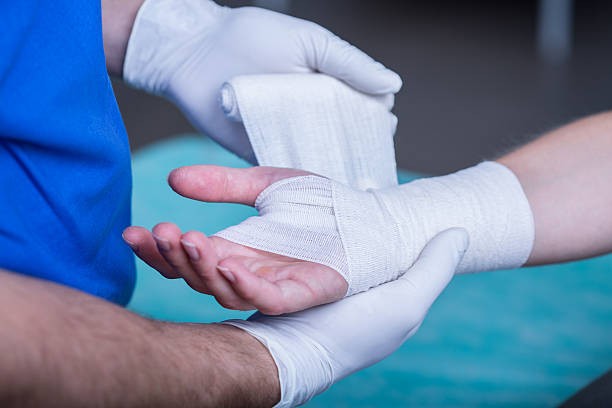Published - Fri, 19 Aug 2022

Basic management of orthopedic emergencies
1. Sprains: Since ligaments don't have a lot of blood flow, sprains can take up to 8 weeks to heal. Dismissing the injury as "just a sprain" should be avoided by doctors because doing so gives the patient the unreasonable expectation of a quick and complete recovery.
a) First and second-degree sprains: RICE, which stands for rest, immobilization, compression, and elevation, is the first line of treatment, along with analgesics or anti-inflammatory drugs. Typically, first- and second-degree sprains don't have any lasting effects.
b) Third-degree sprains: Patients with third-degree sprains should seek immediate orthopedic advice since these injuries might result in permanently reduced joint function. For several weeks, these sprains may need to be immobilized in circumferential casts, or they may need to be surgically repaired.
2. Fractures and dislocations
a) Stabilization of the patient: Although orthopedic emergencies are seldom life-threatening, concurrent life-threatening injuries may be present. Therefore, airway, breathing, and circulation (the ABCs) should be assessed first and appropriate measures are taken. Generally, in multiple trauma patients, airway, head, thorax, and abdominal injuries are treated before orthopedic injuries, although some orthopedic injuries (e.g., pelvic fractures of midshaft femur fracture) can significantly contribute to hemodynamic instability.
b) Reduction of swelling: Swelling occurs early after a fracture or dislocation and can increase the patient’s pain and delay the application of definitive immobilization.
— Elevation of the extremity and application of cold compresses are effective measures for preventing the progression of swelling.
— Potentially constricting jewelry on the injured extremity should be removed in anticipation of extremity swelling.
c) Temporary immobilization: The suspected fracture or dislocation should be immobilized early in the ED visit. Immobilization reduces the patient’s pain, diminishes the potential for damage to the neurovascular bundle, and reduces swelling and bleeding. Additionally, stabilization and immobilization facilitate patient transport, expedites the radiographic examination, and, in the case of fractures, reduce the chance of a sharp bone fragment puncturing the skin and converting a closed fracture to an open fracture.
— For fractures, temporary immobilization is accomplished by splinting across the fracture and the joints proximal and distal to the fracture.
— For dislocations, the joint may be immobilized using a splint or sling.
d) Pain control: Most patients with fractures or dislocations will become increasingly comfortable when the extremity is sufficiently immobilized.
e) Reduction is the process of restoring the bone or joint to its normal anatomic configuration: Early reduction decreases pain, may restore circulatory or nerve function, and prevents the progression of swelling.
— Generally, a radiograph of the bone or joint is obtained before the reduction of the fracture or dislocation.
— Analgesics and sedatives are usually required for most reductions, which are generally accomplished by applying slow, steady, longitudinal traction.
— A post-reduction radiograph is always needed to document the success of the procedure, determine if additional injuries are present, and assess the need for additional treatment.
f) Post-reduction immobilization: Reduced fractures and reduced dislocations must be immobilized before the patient is released from the ED (see Immobilization).
Immobilization
1. Splints or circumferential casts are usually used to immobilize fractures: Splinting is less likely than circumferential casting to lead to pressure sores, circulatory compromise, and neurapraxia. After the swelling has decreased, a circumferential cast can be applied.
a) Patients with fractures that are not prone to complications and have only minimal swelling may be treated in the ED with circumferential casting.
b) Splints are usually made from plaster of Paris or fiberglass. Water causes an exothermic chemical reaction, which causes the material to harden over several minutes. During this process, the splint is molded along one side of the extremity, which is held in the appropriate position. Padding is placed between the skin and splint, and the splint is secured to the extremity with an elastic bandage wrapped circumferentially around the extremity and splint.
2. Immobilization dressings: In addition to splints, several dressings are commonly used in the ED. Examples include the shoulder sling, sling and swath, and knee immobilizer.
Created by
Comments (0)
Search
Popular categories
Latest blogs

All you need to know about Syphilis
Tue, 15 Nov 2022

What is Pemphigus Vulgaris?
Tue, 15 Nov 2022

Know about Scorpion Stings
Sat, 12 Nov 2022

Write a public review